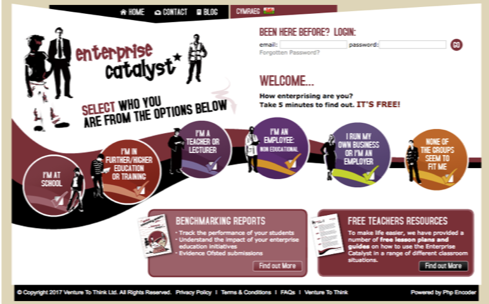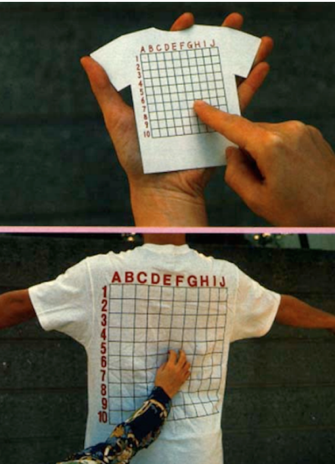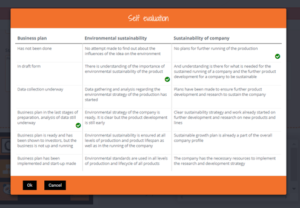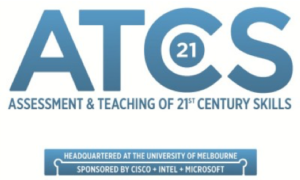Enterprise catalyst
 What it is: Enterprise catalyst is an online questionnaire with automatic algorithms to provide a detailed report to the user based on their results. The report is available to six different target audiences including schools, those in further or higher education, teachers and lecturers, employees, employers or business owners, and others (‘none of the groups seem to fit me’).
What it is: Enterprise catalyst is an online questionnaire with automatic algorithms to provide a detailed report to the user based on their results. The report is available to six different target audiences including schools, those in further or higher education, teachers and lecturers, employees, employers or business owners, and others (‘none of the groups seem to fit me’).
How it works: Enterprise catalyst provides a range of different user types with an online assessment and coaching tool that gives insight into the user’s entrepreneurial mind set (i.e. their attitudes and behaviours), with connections made to career options and entrepreneurial pathways. Users fill in the questionnaire for free by clicking the relevant box between comparative and contrasting pairs of statements. These statements are repeated in different questions as a control mechanism. There are three sections depending on the user type: describing oneself, awareness of and involvement in entrepreneurial activities, and personal statements. The questionnaire does not use start-up terminology and is firmly focused on supporting the individual and providing them with insight into their own characteristics. In addition, education institutions can use the tool for benchmarking and funders/deliverers may measure the impact of programme investments on a range of outcome criteria.
Benefits: The benefit for the individual user consists of an insightful report with personalised results across four or five sections. The different audiences get the same basic type of analysis; however, the language is tailored for that specific audience, e.g. simpler for younger learners. Younger learners get an additional section on personal learning and thinking skills. The sections are ‘Enterprise fuel’, ‘Enterprise style’, ‘Encouragers, support and obstacles’, ‘Team role’, and ‘Personal learning and thinking skills’.
Challenges: The tool has so far only been used in the UK and is only available in English and Welsh. The presentation is not dynamic and based only on a tick-box approach.
Relevance for entrepreneurial teaching: Enterprise catalyst is squarely focussed on the individual focussing on skills rather than using start-up terminology. The tool works at user and macro level and can act as a detailed learning or discussion tool for job seekers / employment agencies, employees / employers, or students / educators.
Applied assessment methods: The tool uses e-assessment, reflective assessment, and self-assessment.
Examples from practice: Enterprise catalyst has been used at regional level in Wales.
 What it is:
What it is:  What it is: This is a tool for evaluation and/or situating the progress of ideas and inventions during the progression of innovation education and entrepreneurship education. It can be used online or as a pen and pencil rubric.
What it is: This is a tool for evaluation and/or situating the progress of ideas and inventions during the progression of innovation education and entrepreneurship education. It can be used online or as a pen and pencil rubric. What it is: This tool is a sliding scale list for individuals to situate their preferred personal attributes. The tool is based on a rubric published in
What it is: This tool is a sliding scale list for individuals to situate their preferred personal attributes. The tool is based on a rubric published in  What it is:
What it is:  What it is:
What it is: 
 What it is: The
What it is: The  What it is: The Skills Challenge Certificate acnowledges the assessment of the essential skills within the
What it is: The Skills Challenge Certificate acnowledges the assessment of the essential skills within the  What it is: An electronic portfolio, also known as an ePortfolio or digital portfolio is a purposeful collection of student work that exhibits the student’s efforts, progress, and achievements in one or more areas. The collection often includes student participation in selecting content, the criteria for selection, the criteria for judging merit, and evidence of student self-reflection. Portfolio means both process and product, path and goal, tool and toolbox, method and principles. The term “E-Portfolio” appears both in educational and professional contexts and involves using online tools.
What it is: An electronic portfolio, also known as an ePortfolio or digital portfolio is a purposeful collection of student work that exhibits the student’s efforts, progress, and achievements in one or more areas. The collection often includes student participation in selecting content, the criteria for selection, the criteria for judging merit, and evidence of student self-reflection. Portfolio means both process and product, path and goal, tool and toolbox, method and principles. The term “E-Portfolio” appears both in educational and professional contexts and involves using online tools. What it is: Five habits of creativity (see
What it is: Five habits of creativity (see